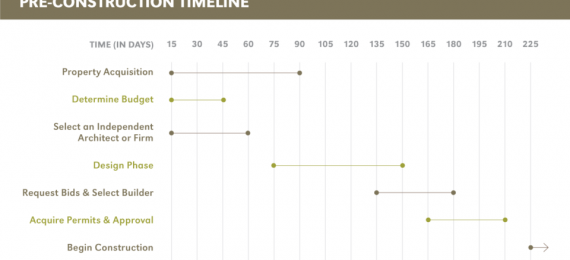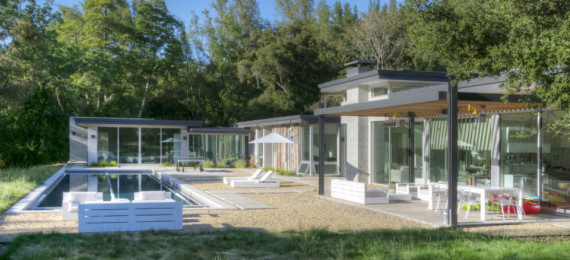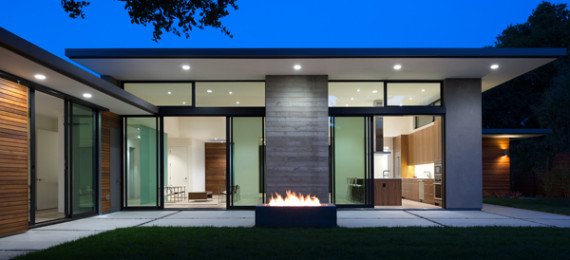These resources are from an archived version of our website. Want to see what we’ve been up to lately? Check out our new website.
Category: high performance homes
Archives - Clarum Homes » Archive by category 'high performance homes' (Page 2)
What is important to you when building a new home?
Posted by Clarum Homes on November 1, 2019 | Categories: custom homes, energy efficiency, high performance homes | No comment
How do you decide whether to build a high-performance home or a home built to code? We can help you figure it out. Building beyond code In California, CalGreen is the baseline building code that all new home construction must follow. In terms of energy efficiency, air quality, and sustainability, there is a lot of room for improved performance by building beyond this code. And, the cost difference is not very significant. In high-performance design and construction, everyone involved in the building process takes into account energy and water efficiency, resource efficient building design...
Read More
Passive-certified vs. Passive-inspired: How to choose which one is right for you
Posted by Clarum Homes on July 1, 2019 | Categories: custom homes, energy efficiency, high performance homes, passive home | No comment
A passive-certified home is one that employs a set of advanced building technologies to achieve extreme energy efficiency. Energy consumption is reduced by up to 90% compared to a conventionally-built home. A passive-inspired home incorporates many of the same building techniques and materials found in a passive-certified home, but without the rigor of certification and at a slightly lower price tag. Keep reading to understand the key differences between these two sustainable home options and choose which route is best for you. What is Passive-Certified? If you would like to part...
Read More
Planning for your dream home
Posted by Clarum Homes on June 3, 2019 | Categories: custom homes, energy efficiency, high performance homes | No comment
Where high-performance houses are concerned, Clarum Homes believes the entire approach is important. This includes everything from design details, materials or installation methods. To ensure all these aspects work in concert to deliver a highly efficient home that lives up to the high-performance label, you’ll need a solid plan. Not to worry, we have some tips to help you plan the high-performance home build of your dreams. Create a comprehensive budget Building a green, high-performance home will typically always cost more than the same home built to standard building codes....
Read More
The ROI of a high-performance home
Posted by Clarum Homes on April 1, 2019 | Categories: custom homes, energy efficiency, high performance homes, passive home | Tags: custom homes, energy efficiency, high performance homes, passive home | No comment
Building a green, high-performance home will typically always cost more than the same home built to standard building codes. The advantage is the long-term energy savings over the life of the home and the improved quality of life — which for many is priceless. Using California Code as a baseline of construction standards, these tables show the costs differences in initial construction costs, as well as the energy efficiency gains and ROI potential. Costs and return on investment People are often surprised to learn that a high-performance home only costs 5-10% more than a conventionally-built...
Read More
Green Home Certification: To certify or not to certify? What is the real value?
Posted by Clarum Homes on October 1, 2018 | Categories: custom homes, energy efficiency, health, high performance homes, passive home | No comment
When an architect, designer, and builder set out with the intention of building a high-performance home, they often determine a sustainability goal based on an established certification program. These third-party certification programs define the parameters and expectations of the custom home’s ongoing energy savings. They include suggested materials, recommend efficiency engineering practices and can demand applied environmental quality controls. There are some popular and emerging high-performance home certification programs on the market today. Homeowners are increasingly familiar with...
Read More
Beat the heat! How high-performance building keeps you cool as temperatures rise
Posted by Clarum Homes on June 4, 2018 | Categories: custom homes, energy efficiency, high performance homes | No comment
When you build a custom home to high-performance or passive home standards, one of the primary objectives is to lower the home’s heating and cooling costs. In traditional construction, heat loss through your walls, roof, and windows can drive up your heating bill. It might surprise you to learn that most heat loss is through the walls – about 35 percent! And, even though warm air rises, you're losing ten percent more heat through your walls than out your roof. The opposite holds true when temperatures outside are hot. A standard home will absorb heat through the walls at higher rates, even...
Read More
Traditional, trendy, or totally you? Custom home design means you can have it your way
Posted by Clarum Homes on April 3, 2018 | Categories: custom homes, high performance homes, luxury homes, Modern Homes, passive home | No comment
Good custom home design is a perfect mix of needs, trends, and priorities. When you build a new home, you decide how you want to live, what you want to live with, and the price you’re willing to pay. Whether you’re into following closely or running away from, the hottest trends in home design, a custom homebuilder like Clarum Homes can bring your dream to life. One of the core benefits of building a new, modern home, is the high level of customization. We dived into what’s heating up in home design trends for 2018 and made some pleasant discoveries. Mainly, custom modern homes have...
Read More
6 tips for making the most of outdoor space in your modern home
Posted by Clarum Homes on July 20, 2016 | Categories: comfort, custom homes, high performance homes, luxury homes, Modern Homes, Palo Alto | No comment
Extend your living space outdoors One of the reasons we all love Palo Alto is for its gorgeous weather. We live in a city that gets – on average – 261 sunny days each year. This beautiful weather motivates us to get outside as much as we can. So, it’s important when planning the construction of your modern home to think about how to extend your living space outdoors. The right design will turn your outside areas into an oasis that’s so comfortable, inviting, and relaxing, you’ll never want to leave! At Clarum, we encourage our clients to think about their outdoor spaces throughout...
Read More
Choosing energy-efficient windows (Part 2) – understanding solar heat gain co-efficiency
Posted by Clarum Homes on May 5, 2015 | Categories: energy efficiency, high performance homes, Modern Homes | No comment
As we mentioned in our last post, Choosing Energy-Efficient Windows (Part 1) - Understanding U-Factor, selecting the right windows is a big decision when building a passive-inspired home. It’s also one of the most important elements for both energy efficiency and aesthetics. In this article, we’ll discuss another essential aspect of energy-performance rating in windows – the solar heat gain coefficient (SHGC). How does energy flow through windows? As illustrated below, windows lose and gain heat by convection, radiation, conduction, and air leakage. Convection occurs...
Read More
Choosing energy-efficient windows – understanding U-factor
Posted by Clarum Homes on April 7, 2015 | Categories: energy efficiency, high performance homes, passive home | No comment
Windows are a crucial component in the design of a house, and their aesthetic appeal can help support the overall style of the building. They allow daylight into the home and give us a visual connection to the outside world. We expect windows to let in fresh air and breezes when the weather is right. And – when the weather is unpleasant – we want our windows to be airtight with great thermal insulation. It should come as no surprise that windows play a huge role in the overall energy efficiency of your home. Windows help to moderate heat flow, making them a key contributor...
Read More
















